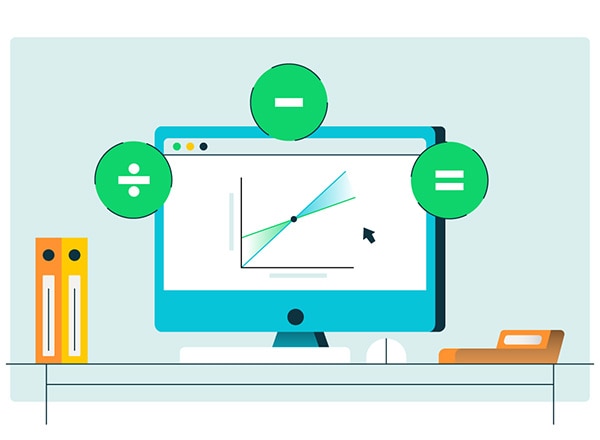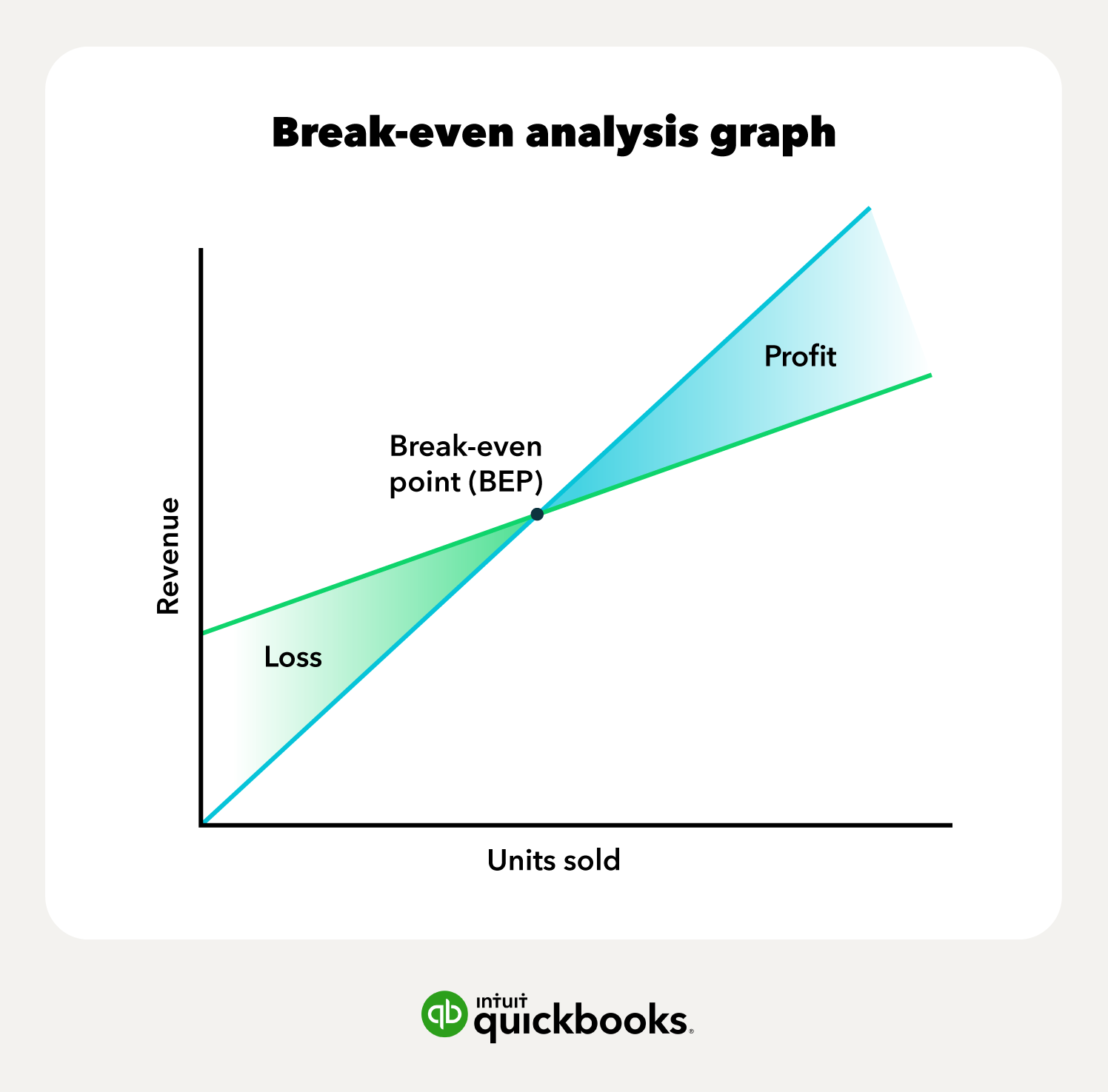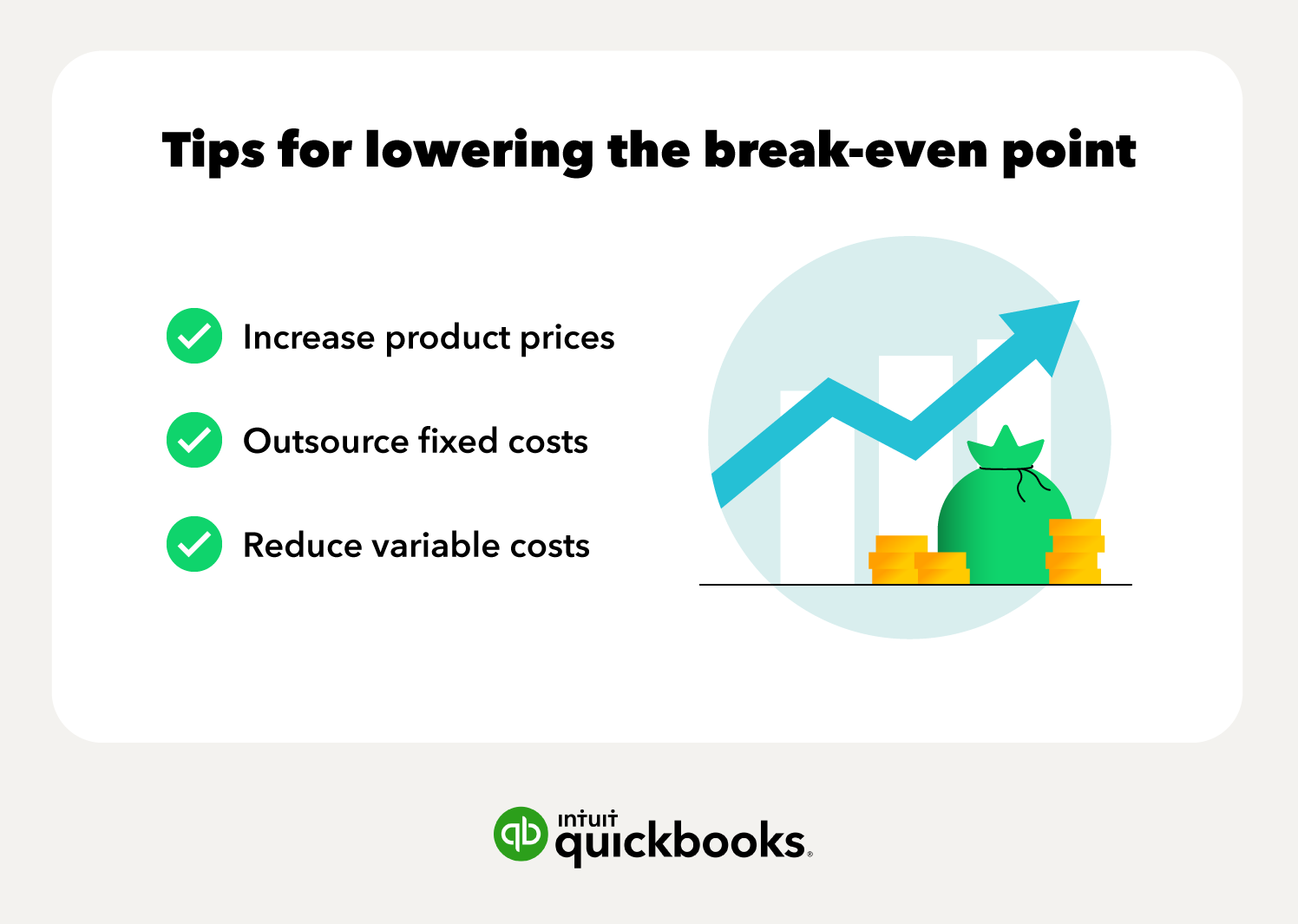Performing break-even analysis: The break-even point in action
Break-even analysis is an essential financial analysis for all businesses, from startups to established businesses looking to roll out a new product or increase total revenue. Here are two examples of the break-even analysis template in use:
Break-even analysis using sales dollars
Let’s say your company has developed a new widget. You’re trying to determine the break-even point of your new business. Here’s what you know:
- Fixed costs of running your business: $20,000 per quarter
- Unit variable cost: $10
- Proposed unit price: $30
1. Calculate the contribution margin
First, you’ll need to calculate the contribution margin:
Contribution margin = ($30 ÷ $10) ÷ $30
The above formula calculates your contribution margin at $0.10.
2. Plug your fixed costs and contribution margin into the break-even point in sales dollars formula
Break-even point (sales dollars) = fixed costs ÷ contribution margin
In this scenario, that formula will look like this:
Break-even point (sales dollars) = $20,000 ÷ $0.10
According to this formula, your break-even point will be $200,000 in sales revenue. This analysis shows that any money generated over $200,000 will be net profit.
3. Compare results to your forecasted sales
Compare this formula to your forecasted sales for the quarter. Will you break even on your revenue? If not, you may need to:
- Increase your sales price
- Increase your level of sales
- Lower your variable cost per unit by lowering labor costs or raw materials cost
Using break-even analysis to determine level of production
Let’s say you’re trying to determine how many units of your widget you need to produce and sell to break even.
Again, here’s what we know about your business:
- Fixed costs of running your business: $20,000 per quarter
- Unit variable cost: $10
- Proposed unit price per unit sold: $30
1. Plug your data into the break-even point in units formula
Remember, the formula for the break-even point in units is:
Break-even point (units) = fixed costs ÷ (sales price per unit – total variable costs per unit)
In this scenario, we’ll calculate the following:
Break-even point (units) = $20,000 ÷ ($30 – $10)
2. Compare results to your forecasted sales
According to the above formula, you’ll need to generate and sell 1,000 units to break even. Any more than that will generate profit. How does that compare to your total sales forecast? If the units sold to break even is greater than your forecasted sales volume, you may want to:
- Increase your level of sales
- Increase your unit production by increasing direct labor

















